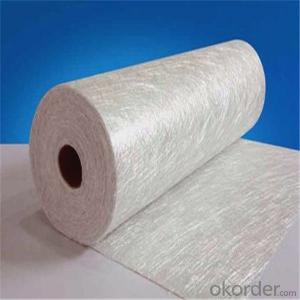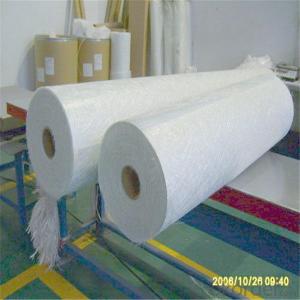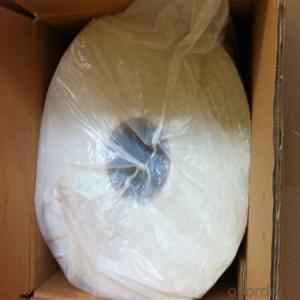Fiberglass Chopped Sand Mat for Boats
- Loading Port:
- Tianjin
- Payment Terms:
- TT OR LC
- Min Order Qty:
- 100 m.t.
- Supply Capability:
- 20000 m.t./month
OKorder Service Pledge
Quality Product, Order Online Tracking, Timely Delivery
OKorder Financial Service
Credit Rating, Credit Services, Credit Purchasing
You Might Also Like
Quick Details
| Technique: | Chopped Strand Fiberglass Mat (CSM) | Dimensions: | 450gsm | Mat Type: | Continuous Filament Mat |
| Fiberglass Type: | E-Glass | Softness: | softness | Place of Origin: | Jiangxi, China (Mainland) |
| Brand Name: | cnbm | Model Number: | 450gsm | color: | white |
| fiberglass type: | E glass | product: | e-glass powder chopped stand mats | binder: | powder or emulsion |
| width: | 1040 or 1270mm, as your requirement | weight: | 30 or 45kg/roll | paper tube diameter: | 90mm |
| outer diameter of roll: | 256mm | packing: | plastic film+carton box + pallet |
Packaging & Delivery
| Packaging Details: | plastic film+carton box + pallet |
| Delivery Detail: | 15-20days |
Specifications
1.e-glass powder chopped stand mats
2.binder:power or emulsion
3.width:1040mm or 1270mm
4.weight:450gsm
Picture
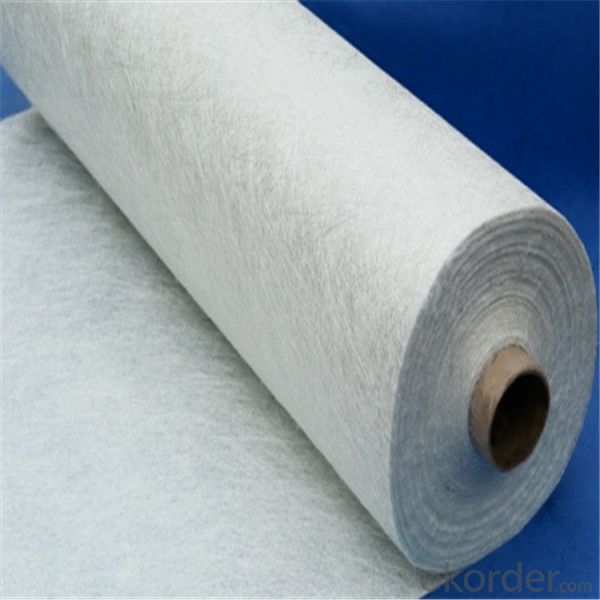
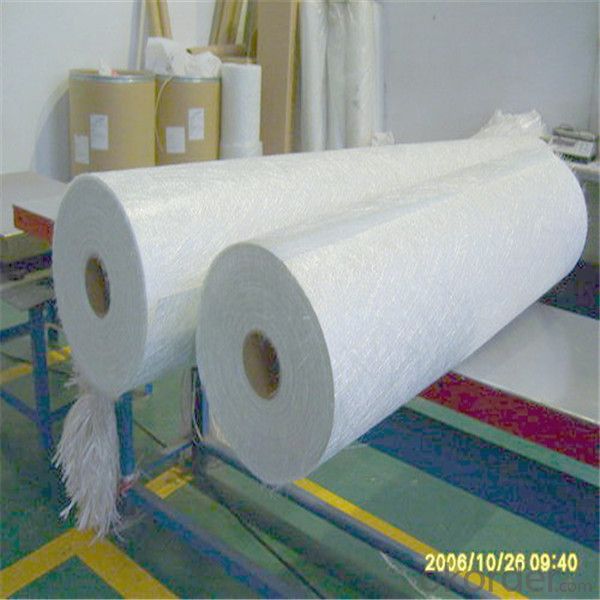
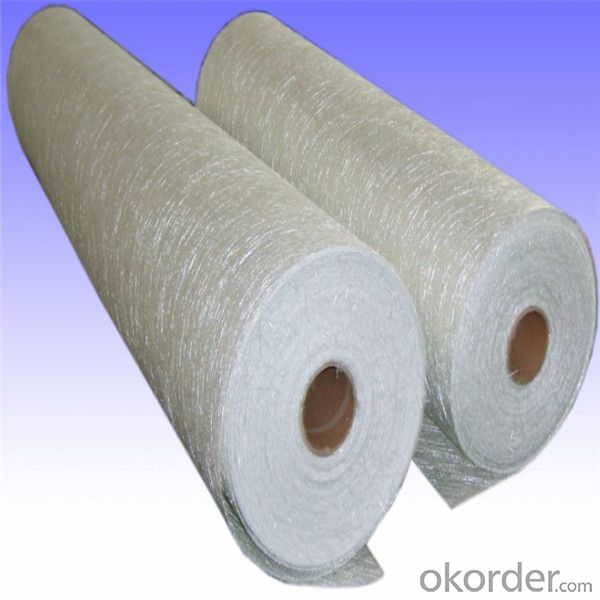
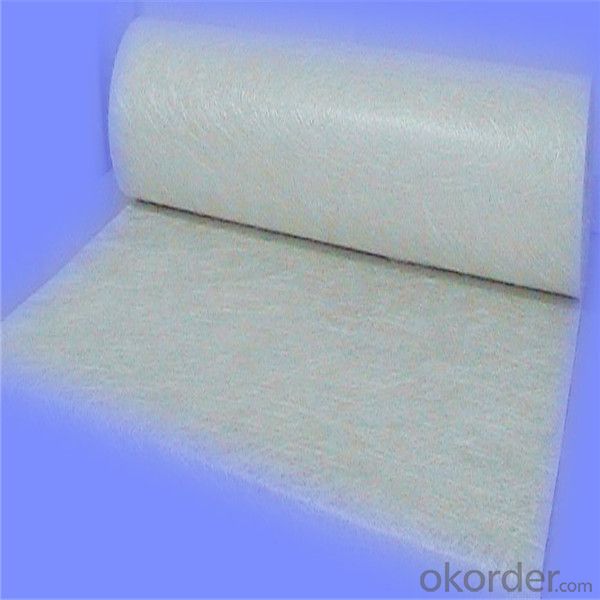
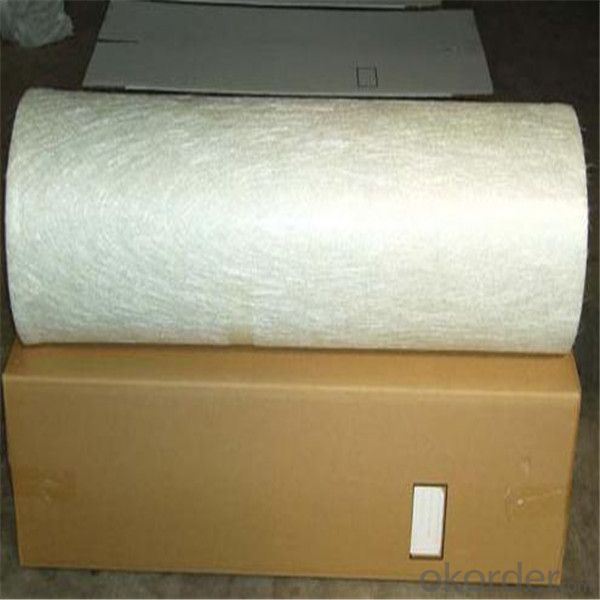
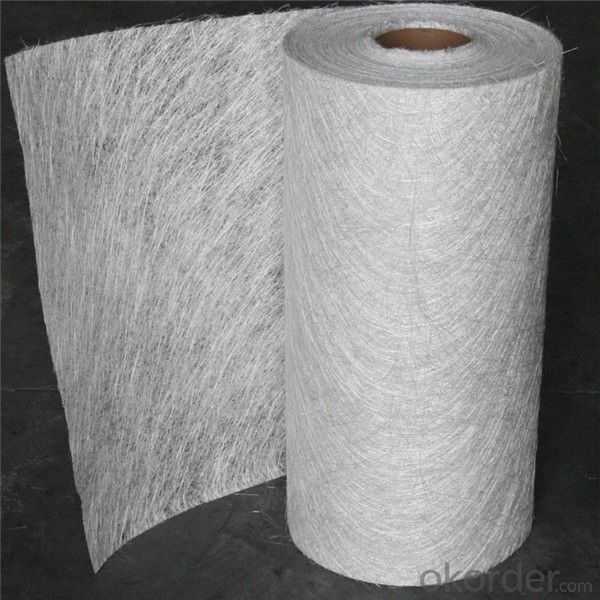
- Q:Take carbon fiber as an example to illustrate the manufacturing process of carbon fiber.
- It is mainly made by polyacrylonitrile and asphalt spinning, surface treatment and sizing process. The disparity in the domestic low-level product is small, carbonization (followed by graphite). The disparity between domestic and foreign is very large, and then by pre oxidation, but the high-end product(both high performance) can not do it, because it is too difficult.
- Q:How does the moisture content of fiberglass chopped strand affect its performance?
- The performance of fiberglass chopped strand can be significantly influenced by its moisture content. Fiberglass is a composite material consisting of fine glass fibers embedded in a resin matrix, which provides strength and rigidity. However, the presence of moisture can weaken the bond between the fibers and resin, resulting in a decrease in overall performance. Moisture in fiberglass chopped strand can give rise to various issues. Firstly, it can lead to a decrease in mechanical properties such as tensile strength, stiffness, and impact resistance. This occurs because moisture weakens the bond between the fibers and resin, reducing the material's load-carrying capacity. Secondly, moisture can cause dimensional changes in the fiberglass. When the material absorbs moisture, it can expand or swell, resulting in warping, distortion, and alterations in shape or size. In industries where precise tolerances are required, such as automotive or aerospace, this can pose a significant problem. Additionally, moisture can contribute to the growth of mold, mildew, or fungi on the surface of the fiberglass. This not only affects the material's appearance but also deteriorates its structural integrity over time. To mitigate the adverse effects of moisture, it is essential to properly store and handle fiberglass chopped strand. It is recommended to store the material in a dry and controlled environment. Moreover, the application of moisture-resistant coatings or treatments can help safeguard the fiberglass against moisture absorption. In conclusion, the moisture content of fiberglass chopped strand directly impacts its performance. It can weaken structural integrity, diminish mechanical properties, induce dimensional changes, and foster the growth of mold or fungi. Therefore, ensuring that the material remains dry and adequately protected is crucial for maintaining optimal performance.
- Q:How is fiberglass chopped strand incorporated into composite manufacturing processes?
- Fiberglass chopped strand is incorporated into composite manufacturing processes by mixing it with resin to create a reinforced composite material. The chopped strands are evenly distributed throughout the resin, providing strength and reinforcement to the final composite product. This mixture is then molded or laid up in specific shapes or layers and allowed to cure or solidify, resulting in a durable and lightweight composite material.
- Q:Can fiberglass chopped strand be used in the production of medical implants?
- Medical implants do not typically incorporate fiberglass chopped strand as it lacks the necessary biocompatibility required for use in the human body. Instead, materials like titanium, stainless steel, and biocompatible polymers are commonly utilized in the medical field. These materials have undergone extensive testing and approval to ensure their safety and effectiveness within the body. They possess specific properties, such as corrosion resistance, tissue integration capability, and compatibility with medical imaging techniques, which render them ideal for implantation. Therefore, it is recommended to employ materials specifically designed and approved for medical implant applications to guarantee patient safety and achieve optimal performance. Fiberglass chopped strand, on the other hand, finds its primary application in industries such as automotive, aerospace, and construction.
- Q:Can fiberglass chopped strand be used in water treatment tanks?
- Indeed, water treatment tanks can utilize fiberglass chopped strand. Renowned for its remarkable corrosion resistance and impressive strength-to-weight ratio, fiberglass proves to be a fitting material for a multitude of water treatment industry applications. By employing chopped strand fiberglass, the tanks gain reinforcement, enhancing their durability and resilience against deterioration. Furthermore, fiberglass remains non-reactive to water and refrains from releasing any hazardous substances, a pivotal aspect in the preservation of water quality within treatment tanks. All in all, fiberglass chopped strand emerges as a dependable and efficacious material choice for implementation in water treatment tanks.
- Q:Is fiberglass chopped strand suitable for applications requiring electrical conductivity?
- No, fiberglass chopped strand is not suitable for applications requiring electrical conductivity as it is an insulating material and does not conduct electricity.
- Q:Is fiberglass chopped strand suitable for applications requiring high chemical resistance?
- Fiberglass chopped strand is unsuitable for applications that demand high chemical resistance. Despite its reputation for strength and durability, fiberglass does not possess inherent chemical resistance. Comprised of resin-bound small strands of glass fibers, fiberglass chopped strand is vulnerable to chemical deterioration and may not withstand environments with intense chemical exposure. To ensure high chemical resistance, it is advisable to explore alternative materials explicitly engineered for this purpose, such as chemical-resistant plastics, metals, or composites.
- Q:How is the adhesion strength of fiberglass chopped strand composites tested?
- The adhesion strength of fiberglass chopped strand composites is typically tested using a variety of methods. One common method is the single fiber pull-out test, in which individual fibers are embedded in a matrix material and then pulled out to measure the force required for fiber detachment from the matrix. This test helps to evaluate the interfacial bond strength between the fibers and the matrix. Another method is the short-beam shear test, where a composite sample with a specific geometry is subjected to a three-point bending load. The test measures the maximum load at failure, providing information about the adhesion strength between the fibers and the matrix. In addition, the peel test can be employed to assess the adhesion strength. This test involves separating a composite laminate into layers, and then measuring the force required to peel the layers apart. It provides insights into the interfacial bond strength between the layers. Furthermore, the pull-off test can be used to determine the adhesion strength between the composite and a substrate. This involves applying a force perpendicular to the surface of the composite and measuring the maximum force required for delamination from the substrate. Overall, these testing methods allow for the evaluation of the adhesion strength of fiberglass chopped strand composites by quantifying the force required for fiber detachment, maximum load at failure, peel strength, or pull-off force. These tests help in assessing the quality and performance of the composite materials, ensuring their suitability for various applications.
- Q:What are the typical testing standards for fiberglass chopped strand composites?
- The typical testing standards for fiberglass chopped strand composites involve various mechanical, physical, and chemical tests to ensure their quality and performance. Some of the commonly used testing standards for fiberglass chopped strand composites include: 1. Tensile Strength Testing: This test measures the maximum amount of tensile stress a composite can withstand before breaking. It helps determine the material's strength and ability to withstand pulling forces. 2. Flexural Strength Testing: This test evaluates the material's resistance to bending or flexing. It provides insights into the composite's structural integrity and its ability to withstand external loads. 3. Impact Resistance Testing: This test assesses the material's ability to absorb and resist sudden impacts or shocks. It helps evaluate the composite's durability and resistance to damage. 4. Water Absorption Testing: This test measures the amount of water absorbed by the composite over a specific period. It helps determine the material's resistance to moisture and potential degradation. 5. Fire Resistance Testing: This test evaluates the composite's reaction to fire and its ability to resist burning or spread of flames. It is crucial for applications where fire safety is a concern. 6. Chemical Resistance Testing: This test assesses the composite's resistance to various chemicals, such as acids, alkalis, and solvents. It helps determine the material's compatibility with different environments and potential chemical exposures. 7. Thermal Conductivity Testing: This test measures the composite's ability to conduct heat. It helps assess its thermal insulation properties and suitability for applications where heat transfer is a concern. 8. Dimensional Stability Testing: This test evaluates the composite's ability to maintain its shape and size under different temperature and humidity conditions. It helps determine the material's stability and suitability for specific applications. These are some of the typical testing standards for fiberglass chopped strand composites. However, it is important to note that specific industries or applications may have additional or specialized testing requirements to meet their specific needs and standards.
- Q:What are the typical fatigue properties of fiberglass chopped strand composites?
- Various factors, such as the type of resin matrix, fiber orientation, and manufacturing process, influence the typical fatigue properties of fiberglass chopped strand composites. However, when compared to other materials, these composites generally exhibit favorable fatigue resistance. The type of resin matrix used is a crucial factor in determining the fatigue properties of fiberglass chopped strand composites. Resin systems with different characteristics can greatly impact the composite's fatigue life. Epoxy resins, which are commonly utilized in fiberglass composites, are known for their good fatigue resistance and ability to provide long-lasting performance under cyclic loading conditions. Fiber orientation is another critical aspect that affects the fatigue properties of these composites. The arrangement of the chopped fibers within the matrix can influence the composite's fatigue strength and durability. Typically, composites with aligned fibers demonstrate higher fatigue strength compared to those with randomly oriented fibers. Furthermore, the manufacturing process employed also plays a role in determining the fatigue properties. Factors like the volume fraction of fibers, curing conditions, and manufacturing defects can impact the composite's fatigue behavior. Employing proper manufacturing techniques, such as controlling fiber content and minimizing defects, can enhance the fatigue resistance of fiberglass chopped strand composites. In general, fiberglass chopped strand composites demonstrate good fatigue properties. They are renowned for their high strength-to-weight ratio, excellent resistance to cyclic loading, and ability to withstand repeated stress. These properties make them suitable for various industries, including aerospace, automotive, marine, and sporting goods. However, accurately determining the fatigue properties of a specific fiberglass chopped strand composite requires considering the specific resin, fiber orientation, and manufacturing process involved.
1. Manufacturer Overview |
|
|---|---|
| Location | |
| Year Established | |
| Annual Output Value | |
| Main Markets | |
| Company Certifications | |
2. Manufacturer Certificates |
|
|---|---|
| a) Certification Name | |
| Range | |
| Reference | |
| Validity Period | |
3. Manufacturer Capability |
|
|---|---|
| a)Trade Capacity | |
| Nearest Port | |
| Export Percentage | |
| No.of Employees in Trade Department | |
| Language Spoken: | |
| b)Factory Information | |
| Factory Size: | |
| No. of Production Lines | |
| Contract Manufacturing | |
| Product Price Range | |
Send your message to us
Fiberglass Chopped Sand Mat for Boats
- Loading Port:
- Tianjin
- Payment Terms:
- TT OR LC
- Min Order Qty:
- 100 m.t.
- Supply Capability:
- 20000 m.t./month
OKorder Service Pledge
Quality Product, Order Online Tracking, Timely Delivery
OKorder Financial Service
Credit Rating, Credit Services, Credit Purchasing
Similar products
New products
Hot products
Related keywords

